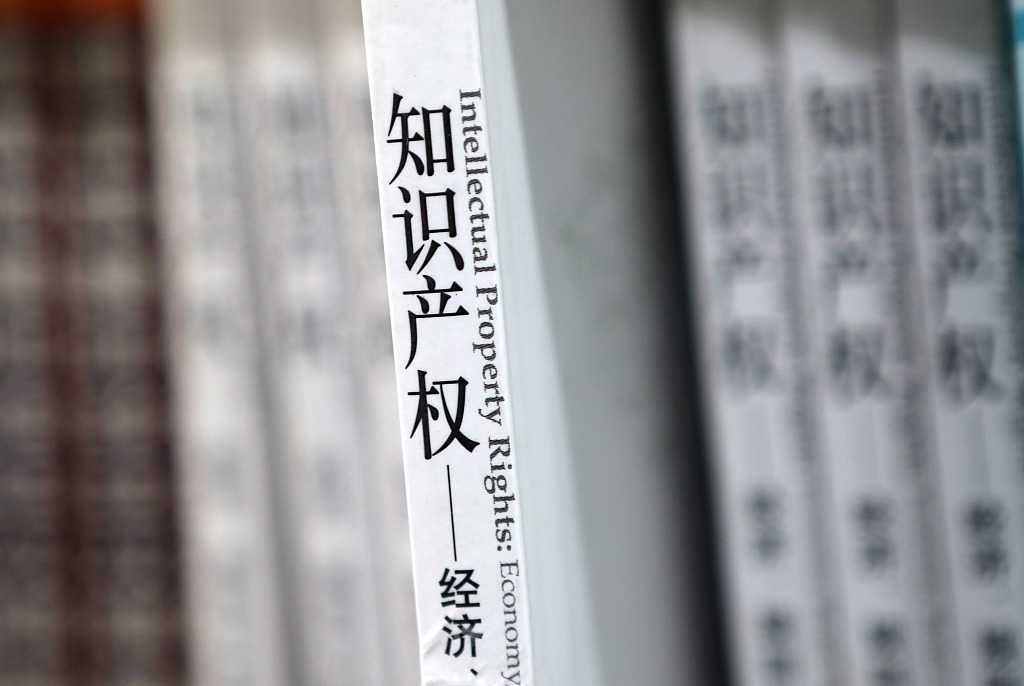
Editor's note: Decision Makers is a global platform for decision makers to share their insights on events shaping today's world. Liu Hua is the director of World Intellectual Property Organization's Office in China. The article reflects the author's opinions and not necessarily the views of CGTN.
As an important pole in the global innovation landscape, China has established itself as a leader in global innovation. Ten years ago, Asia accounted for 50 percent of global intellectual property (IP) filings. In 2021, the figure reached 70 percent, to which innovation from China is a particularly significant contributor.
According to the Global Innovation Index (GII) 2021, a flagship report of the World Intellectual Property Organization (WIPO), China has risen to the 12th place in the GII, up two places from last year, and is still the only middle-income economy in the GII Top 15. WIPO Director General Daren Tang believes that China is knocking on the door of the GII Top 10. In 2020, Chinese domestic applications accounted for 45.7 percent, 54 percent and 55 percent of global patent, trademark and industrial design filings, respectively.
In 2021, China ranked first, third and 10th respectively in the WIPO-administered Patent Cooperation Treaty (PCT), the Madrid System and the Hague System. In the same year, China filed a total of 69,540 PCT applications, up 0.9 percent year over year, and remained the largest user of the PCT global service, with a total of 13 Chinese companies in the top 50 international PCT filers. Among them, Chinese telecoms giant Huawei, with 6,952 published PCT applications, was the largest filer in 2021, topping the list for five consecutive years. The other two Chinese companies in the list of top 10 filers were Guangdong OPPO Mobile Telecommunications and BOE Technology.
China had 19 top science and technology clusters worldwide, with Shenzhen, Hong Kong Special Administrative Region and Guangzhou taking the second place, followed by Beijing (third), Shanghai (eighth), Nanjing (18th) and Hangzhou (21st), all rising in rank year on year and by significant margins. In the ranking of top 50 educational institutions, China boasted the largest number of universities on the list, with Chinese universities taking 19 seats. Four of the top 10 universities on the list are from China: Zhejiang University (second), Tsinghua University (fourth), South China University of Technology (seventh) and Soochow University (ninth).
Tang pointed out that in just a few short decades, China had built a highly effective and modern IP system that had helped drive China's socioeconomic development. China's remarkable achievements in the field of innovation and intellectual property can be attributed to China's policy planning, implementation and evaluation, adherence and determination to deepening reform and opening up, and strong IP ecosystem.
WIPO Chief Economist Carsten Fink noted that the rise of China's innovation economy was not just an artifact of one or two indicators, it was something that we saw in all pillars of the innovation ecosystem, with more and more Chinese multinational companies competing globally based on their technological edge.
IPs help China build an innovation-driven economy
At present, the juxtaposition between the great changes unseen in a century and the pandemic has brought about a huge impact on the world economic development paradigm and profound changes to work and life of mankind. The world is full of uncertainties. But what is certain is that whether it is overcoming the pandemic to rebuild the economy or promoting sustainable development to jointly address global challenges, the support and impetus from science and technology innovation as well as IP protection and application are indispensable.
The role of IP is becoming increasingly prominent. Currently, the value of global intangible assets, mainly represented by patents, trademarks, designs and other intellectual properties, has reached $65.7 trillion, accounting for over half of total global assets, more than tangible assets and more than the combined economic size of the U.S. and China. Over the past decade, global patent, trademark and design filings have increased by 64 percent, 196 percent and 43 percent, respectively, reflecting the importance that companies and economies place on innovation and the growing awareness that companies and economies have of using IP to protect their innovations.
IP protection and application are essential for a country to stand out in the new round of technological and industrial revolutions and take the high ground and maintain a leadership position. We are pleased to see that innovation has become a key force driving China's economic development and that IP is playing an increasingly important role in promoting industrial upgrading, creating jobs, expanding investment, improving business competitiveness and helping the recovery of green economy.
China is taking a series of positive and meaningful steps in this regard. Building a sound system for IP protection and application has been included in the 14th Five-Year Plan. The Outline for Building a Country Strong on IPR (2021-2035) sets out the overall goal of building a world-class intellectual property power with Chinese characteristics; and the 14th Five-Year National Plan for the Intellectual Property Protection and Application makes comprehensive plans for China's IP work in the next five years, setting a target of 12 high-value invention patents per 10,000 people by 2025.

Meanwhile, during the Beijing 2022 Winter Olympics, China presented the instruments for accession to the Hague System and for the ratification of the Marrakesh Treaty to Tang, who came to China to attend the opening ceremony of the sports pageant, fully demonstrating China's proactive stance in participating in the global IPR system.
WIPO is confident in China's innovation and IP development and is willing to continuously strengthen coordination and cooperation with China, increase the number of filings from China through WIPO's global service system, closely connect with China's media, market and various stakeholders such as the government, academia, business and the public, get closer to new technologies, new leaders and a new generation of innovators, and continue to provide Chinese users with easier, more timely and more efficient access to the IP system to empower China's technological innovation and help it build a country with strong intellectual properties.
BFA leads the way in building a new IP ecosystem
The Boao Forum for Asia (BFA) Annual Conference is a major diplomatic event held in China every spring. As a high-end international dialogue platform based in Asia and open to the world, BFA is committed to consensus building, transformation and innovation for the development and prosperity of Asia and the world.
Against the backdrop of changes unseen in a century and the unprecedented pandemic, the establishment of a balanced, inclusive and sustainable global order and IP ecosystem for the benefit of all countries and all stakeholders is both a demand raised by globalization and a goal WIPO works toward.
According to the GII 2021, there is a gradual eastward shift in the cluster of innovation. Innovation performance in East and Southeast Asia has been the most vibrant over the past decade, with South Korea, Singapore, China, Japan and China's Hong Kong Special Administrative Region emerging as world leaders in innovation.
According to the 2021 international registration statistics of patents, trademarks and industrial designs published by the WIPO on February 10 this year, IP filing activity has grown during the global pandemic, even during the 2020 drop in worldwide economic growth. WIPO's international patent filings in 2021 increased by 0.9 percent to 277,500 filings, reaching all-time high. Of these, Asia demonstrated its leadership as the largest source of international patent applications, accounting for 54.1 percent of the total filings in 2021. This fully showcases the dynamism of the Asian innovation ecosystem.
Starting in 2021, WIPO has partnered with the BFA to include intellectual property as a permanent item on BFA's agenda. This year, WIPO will continue its collaboration with the BFA by organizing a roundtable named "IP in Asia: Trends and Opportunities." The roundtable will bring together WIPO officials, political and business leaders, experts and scholars in Asia to discuss Asian trends in the development of the international IP system, assist enterprises in understanding the IP opportunities and risks that they will face in dealing with new technologies, new business models and new trends, and how to strengthen cooperation and enhance core competitiveness through cross-regional IP protection.
The BFA aims to lead the way in building a new Asian economy and a new IP ecosystem, and is also important in promoting the improvement of the global economic governance system, the recovery of the world economy and the construction of a new global development paradigm.
(If you want to contribute and have specific expertise, please contact us at opinions@cgtn.com. Follow @thouse_opinions on Twitter to discover the latest commentaries in the CGTN Opinion section.)

